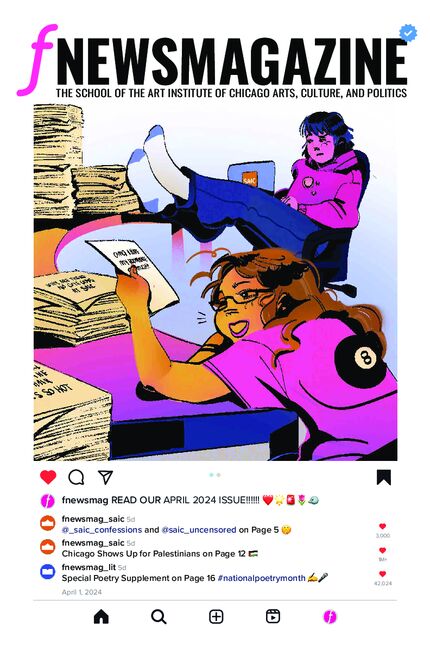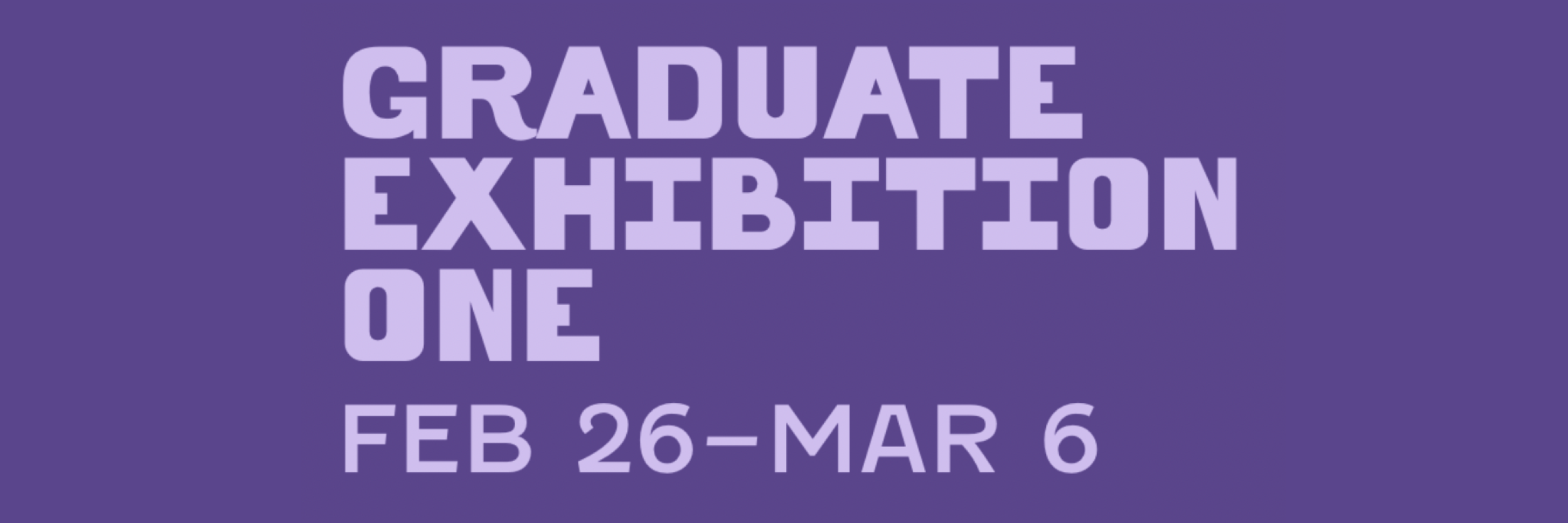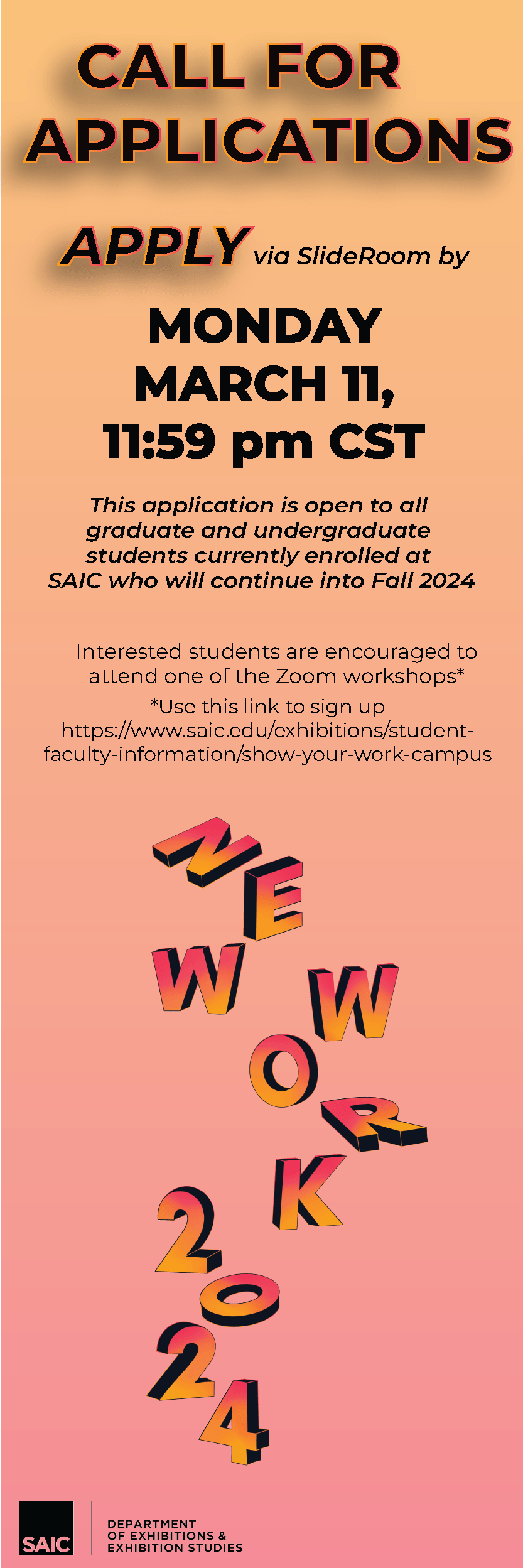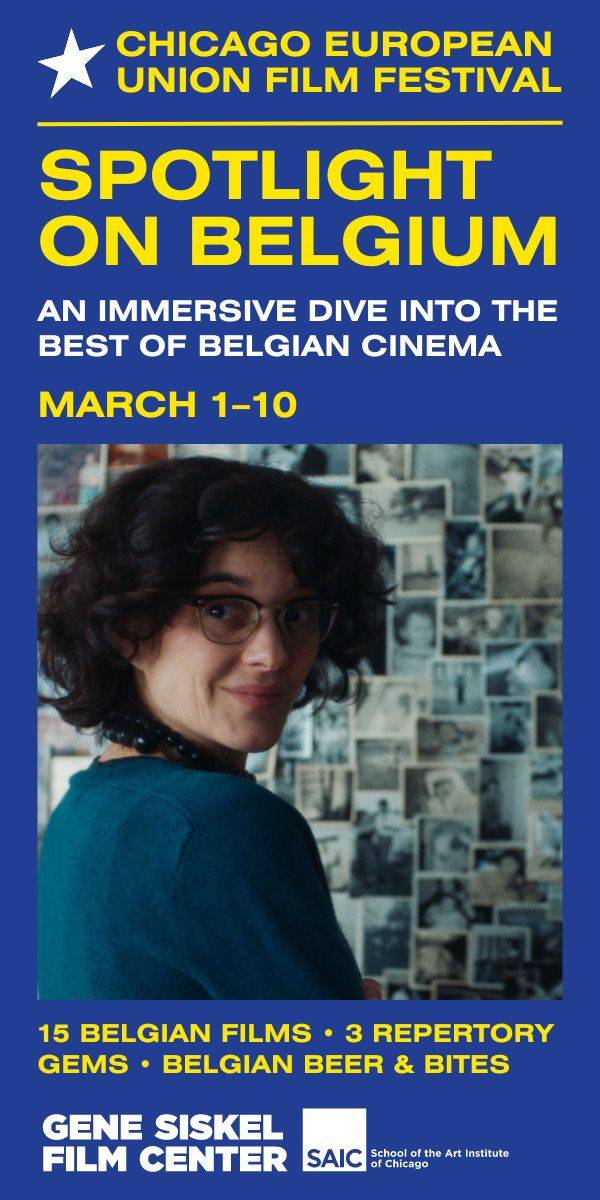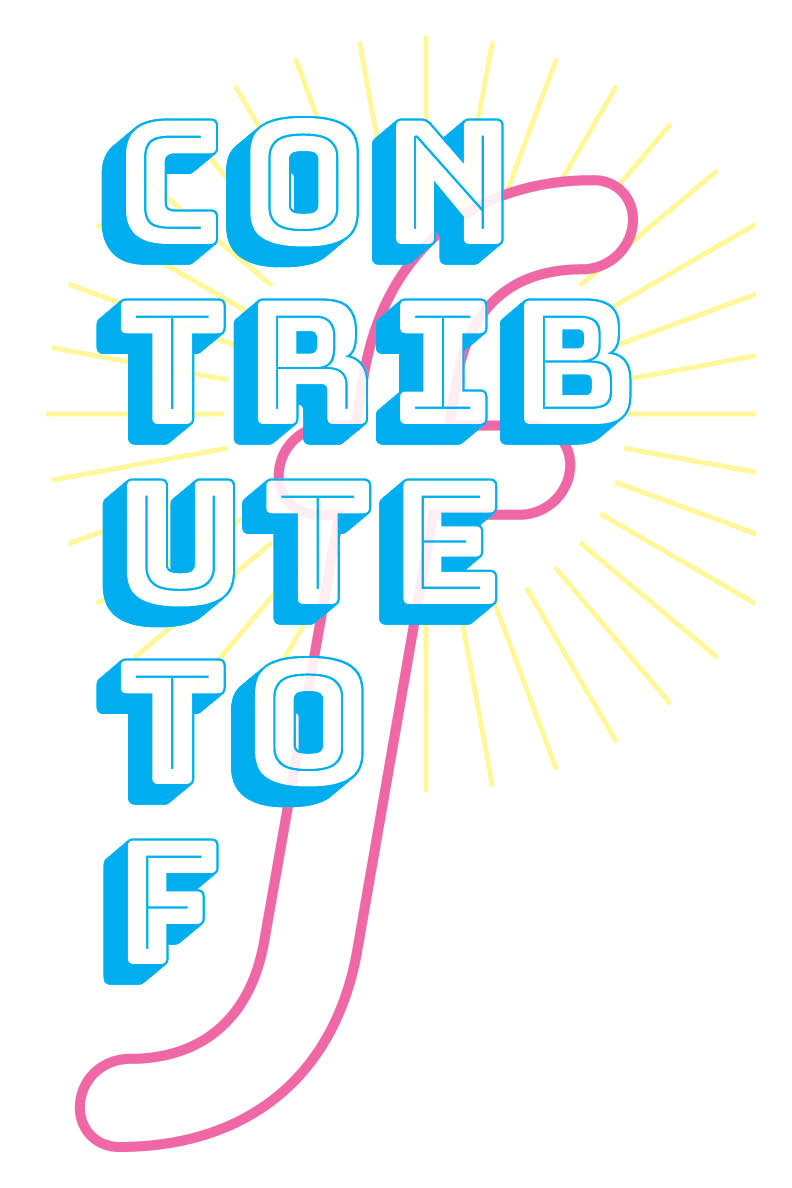Everything is politics these days. You can’t turn on a little reality television without hearing about the elections, the wars, and the starving on the streets of Chicago. If it isn’t enough to get you to a rally, it is probably enough to get you thinking.
What is the place of art in such a world? And, what is the responsibility of the artist? It is a question as old as art. Artists have always played a dual role. We view them outside of culture, radical and untouchable, giving us glimpses of a future to embrace or fear. On the other hand, they also play a role in determining our culture, in creating the language and the images by which we understand our very existence.
The volatile relationship between art and social change is one of the most powerful forces that defined modernism—a fact to be acknowledged, somehow, by any artist who strives for relevance in the 21st century. The 20th century birthed two of its most visually arresting movements with a revolutionary purpose, the Russian and the German avant-garde. While later, on the other side of the Atlantic, the intense individualism of American Expressionism was borne of artists that were convinced of their purpose as social beings. Other artists, such as Diego Rivera and Picasso, fused the notion of aesthetics and political commentary into one. Rivera’s murals depicted the effects of society under capitalism, and Picasso’s famous “Guernica,” which involves the narrative of a bombed city in the Basque region during the Spanish Civil War, not only provided art with a meaning and context, but was also a masterpiece in and of itself. Now, artists of every genre strive to understand the legacies of the past generation as they work to create their own. And, “no matter what decisions we make concerning subject matter and form, the question of how our work relates to, responds to, and ultimately influences the world, is central to the thinking of any serious artist,” explains Richard Deutsch, Adjunct Assistant Professor in Painting and Drawing at SAIC.
The nature of art and the artist
Understanding the role of the artist within society can be daunting. Who cares whether an artist is socially responsible? Carol Becker, the Dean of Faculty and Vice President of Academic Affairs, maintains that at the heart of the question lies the common thread of humanity. “You don’t set out to be socially responsible, you just care about the world. And as you care about the world, and as you think about the world, and as you engage with the world, that becomes part of everything you do—including art-making.” In her book, Surpassing the Spectacle, Becker argues that the artist is in a unique position to change society, to become a “public intellectual.”
Mary Jane Jacob, Adjunct Assistant Professor of Sculpture and independent curator, wishes artists could be more socially responsible. “Wow! Some artists want to be catalysts for social change. I want them to be but I rarely see that happen…if ever. What does happen, over and over and in ways we can’t be fully conscious of but have to trust in, is that artworks change people’s minds, perceptions, who they are and maybe their actions. One way this can occur is when a work triggers a new way of thinking.” Jacob goes on to explain, “This can happen immediately or, powerfully, over time, long after the actual visual experience of the work of art, when one’s mind gravitates back to a work that may not have made an impression at first, or maybe elicited a negative response but it stuck with you.”
Not every artist believes that there is a role for artists in social change. Marion Kryczka, Adjunct Associate Professor of Painting and Drawing, says that the possibility of an artist enacting social change or reform is nullified by the fact that “in our society as well as in most of the developed world, the product of contemporary artists is ignored or even scorned.” Similarly, Suzanne Doremus, a Professor of Painting and Drawing and Graduate Division Chair, when asked whether artists are ever catalysts for social change, replied: “Almost never.” Kryczka does say that, while “an artist has responsibility to the excellence and depth of one’s work, one is inescapably linked to the society he lives in,” and the work an artist creates is “a product of where the culture is at any given time.”
Lisa Wainwright, the Graduate Dean, addresses this point by emphasizing the current state of general political apathy and its presence in the trends of pluralist attitudes among many of today’s artists. Wainwright also highlights the possible responsibility associated with making a mark on a canvas, which will be potentially seen by a multitude of people, and the power that comes with allowing the general public to see creative thinking in the context of freedom of expression.
Does all artwork become political by nature just by being presented in public or must it have expressly political themes? Becker believes that either situation makes a work of art socially relevant. “Whether you were deliberately trying to be an activist or not, if you put out ideas which shake up the way in which society understands itself—you have created a dialogue with society.”
According to Becker, this dialogue between artist and society makes itself apparent in many ways. Whether in the form of color, line, content, or concepts, in whatever form “art” makes itself available, it has the power to heal, to change, to make better. By stirring our imagination, art gives society an “energizing force.” It has the potential to stimulate society, to make it understandable to us and to others.
The artist has the power to use artwork as the medium through which to engage the viewer in an experience of society and culture. In so doing, Jacob says that the role of the artist in social change is “to provoke a question, clarify a need, and give hope that change is possible by making something evident that we didn’t see in our everyday experience, to create experiences by which we can think about change. This is really important. It doesn’t have to be a systemic, programmatic project (like a youth development program or permanent public work). It does have to be insightful…or even more importantly allow other people’s insights to come to the surface and be ‘daylighted.’”
The contexts that shape art
Matthew Goulish, Adjunct Associate Professor of Liberal Arts and Writing and accomplished performance artist, reminds us that the question of an artist’s social responsibility itself presupposes a certain way of looking at life. He elaborates, “It’s not a matter of having an impulse to do something creative and then asking if I have a social responsibility. The impulse to be creative is an encounter with the unknown, with a problem.” He explains, “Something intervenes in your life and creativity is the only response for processing that trouble. That troubling intervention assumes a kind of social context. In some ways it’s more of a responsibility, this responsibility of engagement to creativity, to stay in the proximity of that initiating disruption.”
Context plays a key role in understanding why certain art forms are created at particular times. Nicholas Lowe, professor in the Arts Administration department, believes in the power of art’s relation to a “context,” be it political, social, or otherwise. Lowe witnessed an unprecedented surge of community action in the gay community of London in the late ’80s. At the time, the representation of the gay community was at an all-time low in part due to “Clause 28,” which had art funding withdrawn from exhibitions that displayed art works that revolved around issues of sexual identity. Much like the National Endowment of the Arts (NEA) controversy in the early ’90s, “Clause 28” provoked the gay community into action. Even Lowe’s own work, “(Safe) Sex Explained No. 3,” was subsequently censored due to “Clause 28.” In order to fill the void, artists began creating “positive images” for their community and, according to Lowe, the community “gained an understanding of responsibility for one’s actions, and the responsibility for [the] images being made.”
The public arena is where discussion begins to surround a work of art. It is where, deliberately or un-deliberately, contexts get formed. The power of art, regardless of whether it is in the form of pure formalism or overt political themes, lies in how society understands what to make of it. “At that moment, at that juncture, where something is made visible in society,” Becker explains, “then they [artists] actually are functioning in a role which they might not even be thinking of deliberately.
Art as social change material
Artists also deliberately go into the public arena and work with communities to provide social change directly. In 1993, Jacob curated Culture in Action: Sculpture Chicago, a site-specific arts project that fused artists with various community organizations. The intent of the project was to bridge art with life, and the results were as artistically varied as they were functional. Projects such as “Flood,” which brought together the artist collaborative Haha, HIV/AIDS organizations, and the community at large to create a hydroponic garden to provide organic foods to those living with AIDS; and “Street Level Video,” a project initiated by artist Iñigo Manglano-Ovalle to counteract misrepresentations of youth in the West Side of Chicago, and their everyday struggles with drugs, gangs, and crime. Both projects outlasted the time frame of the curatorial concept itself by several years, incorporating themselves within the community to provide an artistic outlet within social realty.
Jacob maintains that artworks make “you see something differently and art plays a critical role in changing your perception of a situation—you have changed—and your change is part of a social change.” She continues, “The artist can make a change through the way they see and are; and this can happen even without making an art work.”
Mary Patten, a political activist, artist, and Assistant Professor in the Film Video and New Media Department, combines her work as an artist and a professor with her work with political prisoners, prison issues, state repression, AIDS, queer activism, and explains that her art work, “while driven by deeply-felt political ideas, is also fueled by a desire to address the contradictory worlds of politics and art-making.”
With the media coverage that came during the wars in Afghanistan, Iraq and “the war on terrorism,” we are reminded of the potential impact of images and art. There is always someone who will argue with the way an image is used. Reporters and photographers were blamed for sanitizing their coverage of the war, not revealing the particularly brutal scenes of death and destruction that were part of war itself. At the same time, gruesome images of dead children or destroyed villages were criticized for their sensationalism. Patten says, “The instant one takes a ‘stand’ on something—[like] the war in Iraq, the global AIDS crisis, the occupation in the West Bank and Gaza, the crisis of democracy inside the U.S.—one begins to engage in simple, even blunt forms of address, for instance, ‘no blood for oil,’ to create a clear media image/language/rhetoric.”
The politically conscious artist is left to grapple with difficult and complex issues that need swift responses and clever sound-bites. “Some of us worry that ‘art’ is too much of a floating signifier, that it can be co-opted and deployed and marketed to fit all kinds of terrible agendas. But calls for certain kinds of art, and not others, only lead to prescriptions and repressions. The free play of imagination is worth the risk,” Patten warns.
A particular trend that Suzanne Doremus observed among painting students, especially after the events of 9/11, was the increase in the amount of attention devoted to materials and mediums involved in the process of making a mark on the canvas, as well as the increased internalization of subject matter. Personal work, as opposed to more theoretically based art, she says, is becoming more prominent among SAIC’s students—the position of artist as a conduit for the pain and experience of others is becoming more common.
Patten says, “Let’s resist the idea that art is either a weapon or a luxury. Art and art-making is both useless and necessary.” The fact that we can even ask the question is profound. Patten tells us that our politics will shape what we see and feel, but lets hope that “other pictures have meaning, too, besides our own: refugees, permanent nomads, starving on some border. Let’s ask what we can do to change that picture.”
Matthew Goulish further reminds us that whether in art or other aspects of life, “You never have an either-or choice.” He explains, “Binaries are never true.” For instance, you can look at the way language itself is employed. And ask what “about language is complacent in this statement.” In other words, some artists respond to social or political issues by looking at the very medium of their art. As a writer, you might begin to look at the way language itself is used. This is the way you get into poetics, by proposing a different use of language.
Goulish explains that as an artist “the social responsibility arises in letting myself be troubled by [a social issue]. Once I let myself be troubled by it, then it will embed its way into my creative process.” He also phrased it like this, “The responsibility is to program your passions. And then be true to the craft of your art.” The power of the artist is that he/she “can unfix what we see as a problem and how we perceive it and what constitutes a helpful response.” The power of an artist as a catalyst for social change is not only that they can reflect back to us the problems of society, but that they can recreate that very society’s understanding of how to see and heal its problems.
The potential for the artist to create social change can sometimes be undermined by the art-world itself. According to Becker, the power of artists is enormous, but at the same time “artists aren’t really encouraged to be powerful in the world. I think it’s a big plot to keep artists insignificant and disempowered. It’s much easier to let art be relegated to a small arena of aesthetic-ness, that the goal to success [for the artist] is in the art-world, which is a small world,” By keeping artists within the small framework known as the “artworld,” the possibility of change within society becomes rather small. Becker contends that artists are told to stay within the confines of the “artworld” in order to remain in place, so as not to create change within society. “Art can do many, many things, but if artists don’t know that they have the potential to be powerful, and they think what’s powerful is to be outside of society completely, if that mythology is perpetuated then you’ve disempowered artists, and you’ve disempowered their ability to affect society.”
The responsibility of an art school
Affecting society requires knowledge of both artistic skills and the world at large. Without both of these two skills, art would not achieve its goals of reaching the public. The historical context of art and its role in the education of artists, is a topic that cuts to the heart of the responsibility of an art school.
Most instructors interviewed believed it was important “to educate not only a skilled artist, but also a citizen, to give a young person the tools to make a conscious choice about the role one’s political views play in the creative process.” Goulish explains that it is a “big responsibility of the institution to teach people how to pay attention. Learning how to be a good painter is learning how to pay attention to the visual, a writer to language and structure of language.”
If you learn how to see the world, then other things will follow. Becker believes that Americans “get all confused by this stuff, and art schools have perpetuated that confusion. If you talk about art and social responsibility, or art as political, what people hear is “should.” Art ‘should be political,’ or art ‘should have content.’ I don’t really know what artists should do. I just know what artists have done, what they do now, and what they could do. I’m a writer, so I don’t presume to know what artists should do. But I think there is a spectrum of art making—all of which is valid, and only some of which is validated by a pedagogical method. Everyone wants to act as if the making [of art] could be completely separate from history and society, and I don’t think that’s possible for any action.”
Jacob also asserts that art schools need to provide a means to understand the nature of socially responsible art. “Yes! It needs to be part of the school’s mission and curriculum so that it is an option for artists, so artists can take their art ideas and art making into this realm at some point, if only as a part of their practice. YES, because artists who work in other ways need to be open to and not damning of other artists who work for social change through their art and ideas—and they need to realize that their art (no matter what genre it is) can be a powerful social and personal tool, too—so making art has a responsibility. And YES, because art can enlarge people’s perceptions—make them open to change—in an uncommon way, so we need art, we need this tool, to be present and functioning in society.”
Ultimately, the responsibility of the artist is a question that every artist who displays art for the public faces, whether directly or not. As artists we can desire to have nothing to do with politics. But art doesn’t just live in art schools and museums, art is a powerful medium with the potential to reflect society’s greatest aspirations and most horrifying flaws, with the ability to help us forget our pain and understand beauty in a new light, and even the ability to get a group of people to redefine their social relationships and expectations. Artists have the power to change the status quo by creating images that people respond to strongly. As Carol Becker reminds us, “Every action has a consequence. Every action, everything we do, exists in a historical context. Whether we want to acknowledge that or not—it does. The more deliberate we are at certain moments, [the more] we can affect history.”
Read More →

